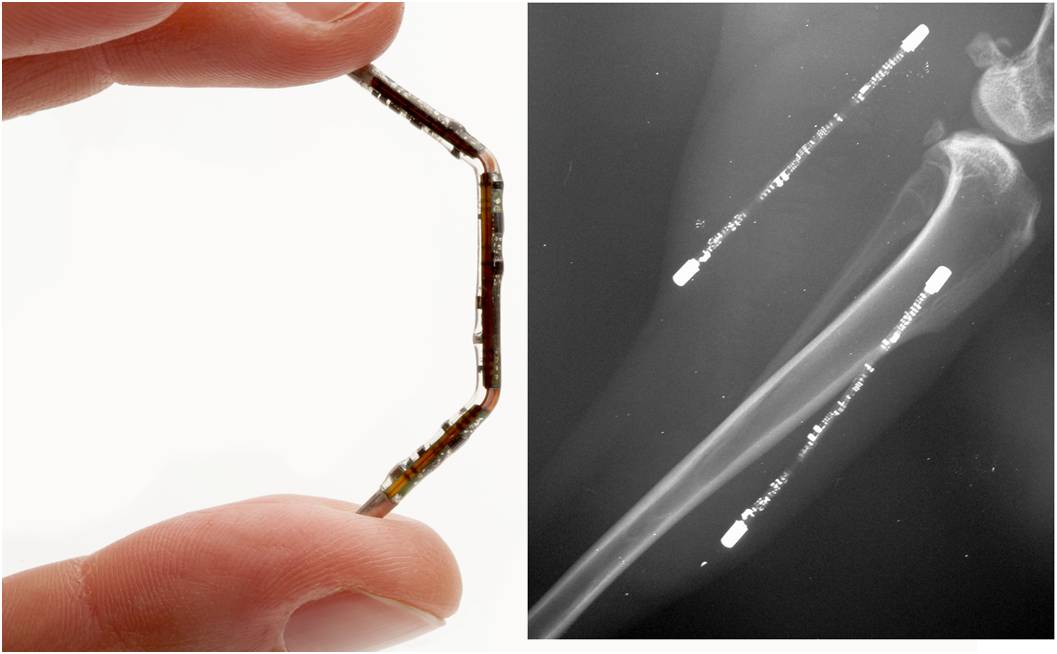Wireless electronic implants for neuromuscular stimulation
Wireless electronic implants for neuromuscular stimulation
Just 2 mm thick, semi-rigid and injectable, developed at the Biomedical Research Group directed by Antoni Ivorra, and tested in vivo. The details of this study are to be published in the journal IEEE Transactions on Neural Systems and Rehabilitation Engineering.
One of the research lines on which the Biomedical Research Group (BERG) has been working in the last few years, led by Antoni Ivorra at the Department of Information and Communication Technologies (DTIC) of UPF, consists of the development of wireless electronic implants for neuromuscular stimulation. It is hoped that via the selective activation of peripheral nerves it will be possible to recover motor functions and that this kind of implants will be applicable in patients with paralysis.

More specifically, the BERG is working on the development of devices small enough for implanting by means of intramuscular injection wherever there is a need for selective stimulation. To achieve this, the group is avoiding electrical supply methods used to date in active implants (battery supply and inductive coupling) given that they require components that are too bulky. The strategy developed by the BERG consists of the use of implants that rectify bursts of high frequency current that flows through living tissue by means of galvanic coupling. In this way, low frequency currents generated locally capable of rendering the desired neuromuscular stimulation.
Recently, this group has developed and demonstrated the functioning of implants based on this strategy that are capable of obeying orders that reach them in digital format from an external controller. The details of this study are to be published in the journal IEEE Transactions on Neural Systems and Rehabilitation Engineering.
Indeed, as explained by Laura Becerra-Fajardo, first author of the study, “on the basis of our electrical neuromuscular stimulation method, and using low-cost conventional components, we have developed a semi-rigid 2 mm thick, injectable implant that responds to external instructions according to the need for stimulation”. “In accordance with the current regulations, the high frequency currents used are safe in terms of undesired electrostimulation and overheating”, she added.
This has been the line of research with which Laura Becerra-Fajardo defended her doctoral thesis last October at UPF. For her doctoral research, she fine-tuned the devices and validated them, first in vitro in order to illustrate how galvanic coupling is carried out, and then, in an animal model in order to demonstrate controlled electrical stimulation. Electrical implants were injected into two antagonistic muscles of the leg of an anaesthetized rabbit and it was found that it was possible to induce independent isometric contractions. These devices are a proof of concept aimed at the future realization of a fully flexible stimulators with diameters of less than half a millimetre.
The results represent a leap forward towards the development of minimally invasive neural implants that can be used in patients with paralysis for the recovery of motor functions such as locomotion.
Reference work:
Laura Becerra-Fajardo, Marieluise Schmidbauer, Antoni Ivorra (2016), “Demonstration of 2 mm thick microcontrolled injectable stimulators based on rectification of high frequency current bursts”, DOI: 10.1109/TNSRE.2016.2623483, IEEE Transactions on Neural Systems and Rehabilitation Engineering.
